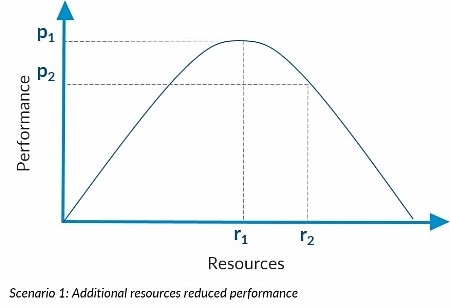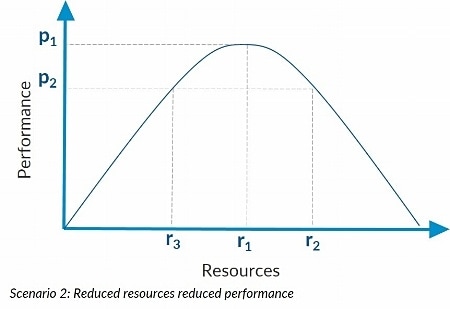Why less is sometimes more for optimum service delivery

In the design of service delivery teams, both internal and outsourced, the key question is; ‘how many resources do you need to run a department, a business function or a project?’
Often the correct answer is less than you think.
Performance issues are too often associated with a lack of resources when it can actually be that there are too many. In these instances business performance is compromised by excessive management capacity.
This hinders business performance and impedes rather than promotes change and improvement.
Grosvenor’s experience has shown that this concept, while counter intuitive, is a root cause of many failed projects, missed deadlines or under-performing functions.
Don’t believe me? Then think on this…
Everyone knows that ’too many cooks spoil the broth’. However not all managers know that too many resources can also spoil the business broth.
People have an inbuilt need to contribute. This is particularly so in today’s workplace environment where the need to ‘add value’, to contribute, or just be seen to be busy is considered vital to job security. Key change projects get resources thrown at them as managers feel that success will be more likely with more resources.
What gets forgotten are some of the basic principles of economics and business management.
Diminishing returns
The principle of diminishing returns demonstrates that as the performance curve flattens out, the additional performance achieved through each additional unit of resource gets less and less.
In reality, the performance curve is actually more a like bell curve. Given this, more resources can actually harm performance.

In Scenario 1, the addition of resources to r2 has actually reduced performance to p2. Interestingly you’d get the same impact if you reduced resources as you can see below.

In Scenario 2, the level of under-performance is the same at r3 as it is as r2!
So do I have too many or too few?
Nice theory but how can you tell if under-performance is due to too many or too few resources?
The accurate answer is that you can’t always tell. However, there are signals that indicate that excessive resourcing may be your issue. These include:
- no discernible improvement in performance even after you added resources – diminishing returns at work
- multiple review processes or consultation meetings – meetings about meetings
- multiple edits of documentation and/or people involved in the
- development, review, edit and production of documents, reports or other deliverables – the drafting loop!
- a seeming lack of clarity on project or outcome ownership – just who is in charge?
Next time you get a request for additional resources, think again.
Instead, ask them how they would get the project completed if you took away some of their existing resources. The need to simplify processes, re-engineer the project or simply unblock the cause of the resource drain will often be revealed.
Fewer, busier resources!
Finally, being busy means you get ruthless on less important tasks. Having time on your hands creates the need to ‘keep busy’. This principle applies as much in business as it does anywhere else.
Busy people will be more productive and will find ways to get the job done.
Challenging current resource levels is often the first step to greater productivity and improving performance.







 We are all about sharing our expertise to help you and your organisation be the best it can be.
We are all about sharing our expertise to help you and your organisation be the best it can be.